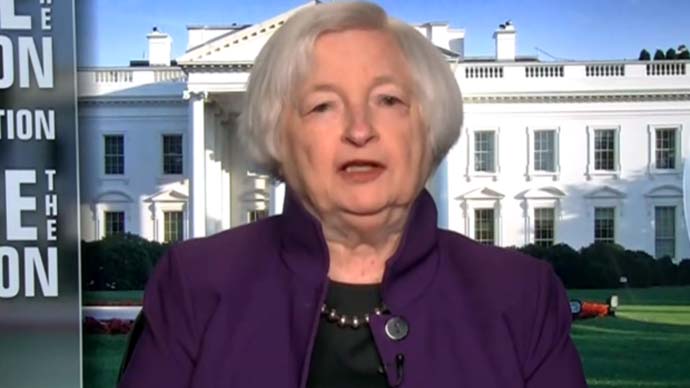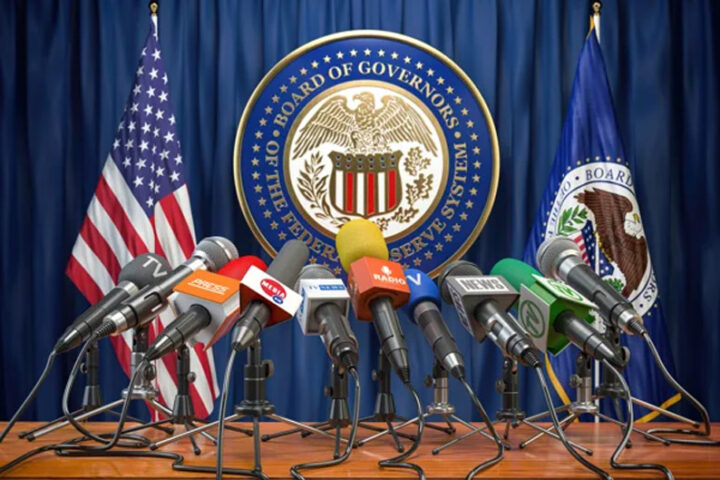Treasury Secretary Janet Yellen said on Sunday that the U.S. federal government will not provide a bailout for Silicon Valley Bank’s investors after the bank was abruptly shuttered, but said financial regulators are “concerned” about the impact to depositors and working to address their needs.
“During the financial crisis, there were investors and owners of systemic large banks that were bailed out,” Yellen said in an interview with CBSNews’ “Face the Nation” on Sunday.
“And the reforms that have been put in place means that we’re not going to do that again. But we are concerned about depositors and are focused on trying to meet their needs.”
SVB Financial Group failed on Friday, the first bank failure in the U.S. since 2020 and the largest since the 2008-09 financial crisis.
To bolster liquidity to meet client withdrawals, SVB had recently sold the bulk of its available-for-sale investment securities at a loss and was attempting to raise additional equity capital as an offset, leading to a loss of confidence and a run at the bank.
According to DBRS Morningstar, this also triggered a significant sell-off in the broader banking sector in the U.S. and beyond as investors fear other financial institutions are sitting on significant unrealised losses on their balance sheets because of markedly higher interest rates.
“Banks in our coverage universe have sufficient liquidity and stable funding and capital to navigate this market turbulence,” said the rating agency.
“We do expect that, following the rapid rise in interest rates, some banks will reposition their securities portfolios by selling lower-yielding securities and reinvesting the proceeds into higher-yielding assets, incurring losses. Nonetheless, the banks in our rating coverage universe are capable of absorbing these potential losses through earnings and strong capital buffers.”
“We view the issues surrounding SVB, a bank with $209 bln in assets, as reflecting its differentiated and concentrated operating model that focused on banking for the tech and life sciences industries and their sponsors,” said DBRS Morningstar.
Historically, this operating model had led to strong returns, fast growth, and robust levels of deposit funding, it added.
Lower valuations
However, following a virtuous tech cycle that included low interest rates, ample venture capital funding, and exit opportunities that saw valuations soar, the Federal Reserve’s tightening cycle has led to lower valuations, less funding from sponsors, and a heightened cash burn at start-ups, all contributing to deposit outflows at SVB.
“Despite the regrettable loses for shareholders, and the almost inevitable market jitters, Yellen has made the sensible decision at this stage to bring stability and confidence into the critical banking sector,” said Nigel Green, CEO and founder of leading independent financial advisory and fintech deVere Group.
“The fallout of not doing so could have had serious, far-reaching consequences for the US, and therefore global, economy,” Green said.
On March 8, SVB released a mid-quarter update, which stated that it had sold $21 bln in investment securities for a loss of $1.8 bln (after tax) and was attempting to raise additional capital.
A bank run ensued, and on Thursday, a staggering $42 bln of deposits were withdrawn from the bank, representing about 25% of total deposits, with the pressure of this ensuing liquidity crunch leading to the bank’s collapse.
Unlike most banks, SVB had a very large fixed-income securities portfolio representing more than half of total assets, as the bank invested a significant amount of deposits that it was attracting when tech and life sciences companies were flush with cash and high valuations.
Deposits tripled
Although deposits had almost tripled since 2019, there are some very specific circumstances surrounding SVB’s demise, but clearly the sudden rise in interest rates was a key part, explained DBRS Morningstar.
“Contributing factors include fast growth and a very narrow commercial client base that maintained deposit balances far above the Federal Deposit Insurance Corporation’s (FDIC) insured limit, making them highly vulnerable to any perceived weakness that contributed to the run on the bank. At YE2022, over 95% of deposits were uninsured.”
As regards the rest of the banking sector, the rating agency said that “U.S. banks’ balance sheets remain strong with ample levels of liquidity and sticky deposit funding. Indeed, deposits remain higher than pre-pandemic levels, with the loan-to-deposit ratio of 69% at YE2022 still superior to the pre-pandemic level of 76% at YE2019.”
“Given higher interest rates, total deposits declined in Q4 2022 with a shift in mix to interest-bearing or higher-yielding alternatives. We expect this trend to continue in 2023.”
After another bank failure over the weekend (Signature Bank, which had $110.4 bln in assets at YE2022), on Sunday U.S. regulators announced that all depositors of both SVB and Signature Bank would be made whole and able to access their deposits on Monday, the rating agency said.
In addition, the Federal Reserve announced the creation of a Bank Term Funding Program. Under the program, eligible depository institutions can pledge high-quality securities at par to get loans of up to one year in length.
“This will prevent depository institutions from having to sell these securities at a loss to meet potential liquidity demands. The Federal Reserve also noted that it is prepared to address any further liquidity pressures that may arise.
“This should support calmer markets and provide additional liquidity to the banking system, while helping to reduce the likelihood of contagion,” DBRS Morningstar concluded.








